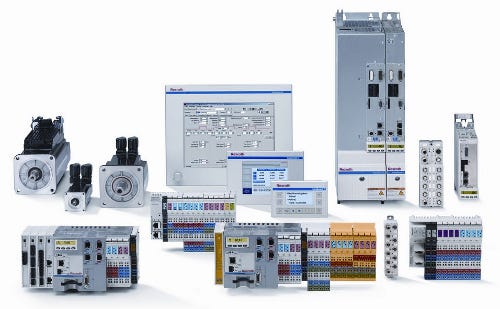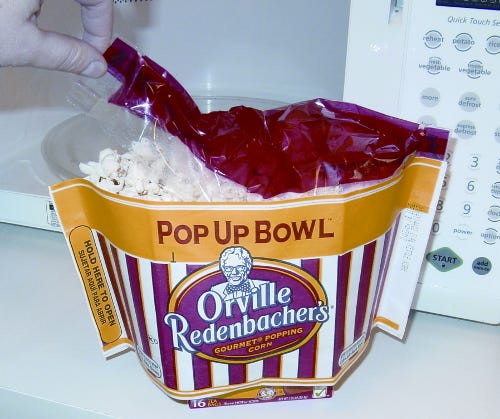Innovations with impact
January 30, 2014

Innovations with impact
Each year, thousands of new products of all types are introduced. Since no brand owner wants a new product to look like everyone else's, every new product likely represents a new package, whether it's in design, material or manufacturing process. It is this imperative that drives a steady stream of innovation, making packaging such an exciting field of work.
Each day, editors at Packaging Digest receive notices about new packaging. Time will tell which products can become sales superstars and which packages will propel these products to lofty heights. However, the editors enjoy comparing this multitude of packaging—some amazingly innovative and others retreads of overused ideas.
In this article, Packaging Digest's editorial team looks at packaging, materials and equipment that caught our eye during 2011. These are just a few items commercialized in the last year that we feel have the potential to score big in the market. Some already are having an impact.
See if you agree. If you disagree, or feel there is other packaging that deserves consideration, please let us know by posting talkback to this story at www.packagingdigest.com or a tweet at www.twitter.com/packagingdigest.
Detergent packaging molded around sustainability concerns

Seventh Generation
Seventh Generation's 4X laundry detergent bottles stand tall among the rows of plastic bottles on retail shelves. Naturally, the containers-dubbed eco.bottles-grab attention because they are made of recyclable molded paper fiber with thin, internal PET liners by Ecologic Brands, based in Oakland, CA.
When the highly concentrated, yet gentle, detergent was developed, the eco-conscious company wanted packaging that would convey the brand message of personal and environmental health along with sustainability, according to Peter Swaine, Seventh Generation director of global strategic sourcing.
Swaine says the company receives all kinds of ideas for products and packaging. In fact, he says, Ecologic's idea was not adopted immediately. However, it was felt that the idea of using a molded shell made of recycled and compostable paper materials with a liner that reduces the uses of plastic by 66 percent would draw the consumer into the packaging recycling process. Ecologic's ability to apply the spout in a way that would help prevent leakage was a major factor in Seventh Generation's decision to use it.
The response since the product was introduced in March 2011 has been strong among both retailers and consumers, Swaine says, adding that, "The molded fiber bottle has been a very differentiating factor." He points out that Seventh Generation is just filling its retail pipeline with the new product, and time will tell how successful the new product and package will be. It already is available in more than 7,000 stores operated by companies such as Target and Kroger.
Meanwhile, Julie Corbett, CEO of Ecologic, says the use of paper in rigid containers is "a seismic innovation" that consumers have been wanting for a long time. "Consumers don't see a difference between a 10-g plastic bottle and a 15-g plastic bottle, but they see the difference with a molded fiber paper bottle."
Corbett, originally from Canada, says the eco.bottle packaging was inspired by her family's involvement in the paper industry and Canada's sales of milk in thin-walled plastic bags that are then poured from reusable pitchers.
Corbett says nobody takes packaging changes lightly, and she praises Seventh Generation for the courage to adopt the new bottles. Since the molded-fiber containers have begun appearing on retail shelves, Ecologic has received a "ridiculously high" number of inquiries about the eco.bottle.
She says Ecologic is a small company that is scaling up its operations and building a new manufacturing facility in the western U.S. The company also will begin offering three stock bottles in a 50-oz size with a detergent-style dosing cap or twist cap, a 32-oz size with a detergent-style dosing cap or twist cap, and a 64-oz size with a 38mm spout suited for orange juice and dairy products. The eco.bottle is available through container distributors Berlin Packaging and TricorBraun.
— John Kalkowski, Editorial Director
Berlin Packaging, 800-723-7546. www.berlinpackaging.com
Ecologic, 877-326-5642. www.ecologicbrands.com
TricorBraun, 800-325-7782. www.tricorbraun.com
Integrated control systems optimize packaging operations
Automation suppliers are introducing integrated control systems that enable OEMs and end users to control all of the functions of their packaging lines from one controller and using one software system.
Omron Industrial Automation has released a new class of controller, the Machine on Controller (MAC), which is supported by Sysmac Studio machine automation software. Omron's NJ-Series MAC was created to integrate multiple, specialized controllers—motion, logic, sequence, vision, operator safety and RFID tracking—with exacting system synchronization to deliver high performance throughput on a single controller. Sysmac Studio software, which was created to provide full control over an automation system, integrates configuration, programming and monitoring into one software.

Bosch Rexroth automation devices
Bosch Rexroth Corp.'s fully open system solution—IndraMotion for Packaging—is now available in the new software version 12 and comes with a series of additional functions allowing users to comfortably program robotics applications with the PLC. Multi-Ethernet interfaces on controls and drives—including on the further developed motor—integrated IndraDrive Mi drives-reduce the costs for OEMs having to adapt their solutions to end user requirements. With this automation solution, Rexroth aims for a consistent programming concept. With the latest software version, which incorporates the CoDeSys V3 run-time system and comprehensive PLCopen function libraries, users can implement all PLC and motion programming tasks, including individual drives, synchronized movements and robotics
Beckhoff Automation LLC has introduced The Power of One , which can integrate high-performance PLC, motion control and robotics on a streamlined PC- and EtherCAT-based control platform. Multiple expensive controllers and specialized hardware can be replaced with a powerful centralized system. The system features one controller for motion, sequencing, HMI, safety and data; one high-speed network (EtherCAT) for I/O, safety and drives; one powerful and modular I/O system for all controllers; one programming configuration tool for all controllers, drives and safety devices; and one drive for servos, VFDs and motion control.
Rockwell Automation's Integrated Architecture provides an integrated platform to create motion and machine control using a single programming environment. It has expanded its Integrated Architecture portfolio for smaller applications with a series of scalable, Allen-Bradley CompactLogix programmable automation controllers (PACs), servo drives, I/O, and visualization and simplification tools. With features such as integrated motion, safety, EtherNet/IP connectivity and re-usable development tools, Rockwell Automation gives users the ability to standardize on a single control platform for small to large-scale applications.
B&R Automation Studio is an integrated software development environment that contains tools for all phases of a project. The controller, drive, communication and visualization can all be configured in one environment thus reducing both integration time and maintenance costs. An integral component of Automation Studio is the real-time operating system, the software kernel that allows applications to run on a target system. This guarantees the highest possible performance for the hardware being used.
Siemens has introduced automation software called the Totally Integrated Automation Portal (TIA Portal) that features one engineering environment and one software project for all automation tasks. Designed for high efficiency and user-friendliness, TIA Portal will be the basis of all future software engineering packages for configuring, programming and commissioning automation and drives products in the Totally Integrated Automation portfolio. Examples of this include the new Simatic Step 7 V11 automation software for Simatic controllers, and Simatic WinCC V11 for Simatic HMI (human machine interface) and process visualization applications.
The new WinCC V11 engineering software includes configuration of machine-level applications using HMI operator panels with support for current Simatic TP and MP model panels, support for the new Simatic HMI Comfort Panels and for larger PC-based SCADA (Supervisory Control and Data Acquisition) process visualization systems. Configuration and commissioning of the Sinamics inverter drive family is planned in future TIA Portal enhancements.
— Jack Mans, Plant Operations Editor
B&R Ind. Automation Corp., 770-772-0400. www.br-automation.com
Beckhoff Automation LLC, 952-890-0000. www.beckhoffautomation.com
Bosch Rexroth Corp., 800-739-7684. www.boschrexroth-us.com
Omron Industrial Automation, 800-556-6766. www.omron247.com
Rockwell Automation, 414-382-2000. www.rockwellautomation.com
Siemens, 800-743-6367. www.usa.siemens.com
Fun, functional packaging makes snack really pop

Orville Pop Up Bowl
The aroma of microwave popcorn attracts attention. When it wafts through the air, the warm, buttery scent entices noses from all corners of any home, office or dorm room. The packaging, however, traditionally hasn't been quite as welcoming-the grease-covered pillowy bags can be hard to open, and they don't show off the product or lend themselves to sharing the tasty treat inside. Packaging engineers at ConAgra Foods, the company that owns the Orville Redenbacher's brand, knew a change was due.
"Consumer research and insights indicated that traditional microwave popcorn had some shortcomings," says senior principal packaging engineer David France. "Consumers wanted a package that allowed them to enjoy Orville Redenbacher's delicious popcorn without getting their hands messy, without spilling or having to use their own bowl to share it conveniently."
ConAgra conducted consumer research in focus groups and in-home studies; went through several rounds of brainstorming, prototypes and consumer tests before arriving at the Pop Up Bowl. The bag closely resembles a conventional microwave popcorn pouch—it unfolds, then lays flat in the microwave, but instead of merely inflating as the kernels expand, the pouch is topped with a translucent tinted PET film that gives the consumer a clear view of the popping action. When popping is completed, the bag is placed on its end; the clear film layer on top peels back, safely releasing the steam and allowing easy access to the freshly popped corn. The bag also acts as a serving container that's primed for sharing the snack.
According to France, more than 60 ConAgra Foods employees, multiple equipment vendors and various raw material suppliers lent input and insight in the two-year effort to bring the Pop Up Bowl to market. "The package is the most complex high-speed lamination ever produced for a microwave popcorn package," he says. "It is a horizontal form/fill/seal structure formed from a unique lamination of PET film with continuous laser scores, tear strips, paper sidewall strips, three different adhesives, inks and susceptor patch for microwave heating." The Pop Up Bowls are produced and filled at ConAgra Foods facilities.
France says retailers and consumers have responded well to the new packaging format, which hit the shelves in March 2011; Orville Redenbacher's flavors that have been converted to the Pop Up Bowl have since seen double-digit sales increases.
To see a video of the Orville Redenbacher's Pop Up Bowl in action, visit www.packagingdigest.com/popupbowl.
— Jenni Spinner, Senior Editor
On-demand hot melt system is ‘Turbo' charged
What's a hot melt adhesive system without heat? It's one of the coolest innovations of 2011, according to the editors of Packaging Digest.
HB Fuller Liquamelt
Purchased by H.B. Fuller in April 2011, the Liquamelt concept was the brainchild of adhesive and equipment experts at Liquid Polymer Corp. They thought a system that eliminated excessive heat would also cure most of the negative issues associated with hot melt, such as charring, messy clean-up and the danger of burns to users.
The company commercialized the idea of making adhesive on demand right before it is dispensed. The new concept became a system with the invention of the TurboActivator equipment component to help dispense specially formulated adhesive material that was developed by company chemists. Dave Mancuso, business development manager at H.B. Fuller, says this is a key point: "The Liquamelt system is a unique combination of equipment and adhesive working together." Both equipment and material are patented.
The material is a liquid dispersion until it's heated, mixed and processed with the TurboActivator technology, at which time it transforms into a thermoplastic adhesive. Active ingredients are high-molecular-weight ethylene vinyl acetate (EVA) polymers, polyolefins, a small amount of water and soy oil. During development, Liquamelt adhesive chemists looked at a variety of oils. Soy bean oil seemed the most plentiful and cost competitive. It worked with the formulation, too, and has an environmental edge: about 40 percent of the product is renewable material and replaces petroleum-based alternatives.

Graco TurboActivator
Here's how the Liquamelt system works: The room-temperature liquid goes through the TurboActivator component, a device about the size of a 16-oz water bottle, where it's rapidly heated to between 350 and 400 deg F. The heat activates the material and turns the water component in the formulation to steam, which provides a foaming action when the adhesive is dispensed. According to Mancuso, competitive foaming systems inject gas or other materials to foam their adhesive. Here, this happens naturally and effectively.
Material savings are often above 50 percent with excellent bonding performance on a variety of fiber substrates (corrugate or paperboard, even coated stock) across a temperature range from -40 deg F to 140 deg F, which Mancuso indicates is a wide range for a single adhesive product.
The "cool on delivery, hot on demand" Liquamelt system offers a number of benefits:
• Sustainability: The material's organic component (soy bean oil) reduces use of petroleum-based materials typically used in adhesive formulations. Plus energy usage is reduced during material manufacturing, as well as during use on the packaging line.
• Safety: Because there are no hot hoses or tanks, there's less chance of employees getting burned than with traditional hot melt adhesive equipment systems.
• Productivity: With a simpler design, the system starts up in less than 20 minutes (sometimes less than 10 minutes) to improve uptime, compared to standard hot melt adhesive delivery systems which may take from 45 minutes to 1.5 hours to heat up and melt traditional hot melt adhesives. The closed-loop system helps to keep contaminants out and material in. If there is a spill, clean up is easy for two reasons. One, the material is not an adhesive until it goes through the TurboActivator component. Two, once it's activated, the adhesive doesn't stick to metal, plastic or rubber, so build up can be removed easily from packaging machines.
• Efficiency: Without tanks and hoses, the small-footprint system integrates into customers' existing packaging machines easily.
• Costs: According to Mancuso, the premium Liquamelt product offers lower overall operating costs (measured as cost per part) than traditional hot melt. Comparatively, density savings add up: Foaming may save up to 50 or even 60 percent of material, and lowering bead size (without affecting the integrity of the bond) can save up to 10 to 30 percent. Becausee customers only have to buy half as much material, shipping and freight costs may be cut in half. Then add in lower energy and maintenance costs and, Mancuso says, the Liquamelt system equates to a pretty attractive value.
Liquamelt material is packed in a 33-lb bag-in-box carton, which mounts on a packaging machine (such as a case erector) and gravity feeds it into the dispenser unit. Or H.B. Fuller can supply it in larger bulk-feed containers (drums, barrels or totes) using piston or diaphragm pump unloaders for high-volume operations.
While the entire system is supplied by H.B. Fuller, the company partnered with Graco to develop the complete delivery system including pump, reservoir, delivery hose and TurboActivator. Graco started by supplying pumps to Liquid Polymer Corp. and H.B. Fuller chose to continue and expand this strategic relationship.
The Liquamelt system has been field tested. Nearly a dozen of H.B. Fuller's customers are already using it, either with a hand gun or an automatic applicator. Most of the business is retrofits, but a couple OEMs—A-B-C Packaging Machine Corp. and Wepackit 2009 Inc.—have incorporated it into their case erectors. Liquamelt had its market debut at Pack Expo Las Vegas 2011, and was demonstrated on A-B-C Packaging Machine's new Model 450 case erector.
Mancuso says there's plenty more to come. "The H.B. Fuller market philosophy is to build a platform around the Liquamelt system and, as we develop more technology, to expand it into new markets," he says. "The idea of the Liquamelt on-demand processing is appealing for many different markets. With some changes and variations in formulation, we feel we can increase the sustainability and increase the breadth of the market penetration with this type of technology. Packaging is just the beginning."
— Lisa McTigue Pierce, Editor
A-B-C Packaging Machine Corp., 727-937-5144. www.abcpackaging.com
Graco, 800-328-0211. www.graco.com
H.B. Fuller, 888-423-8553. www.hbfuller.com
Wepackit 2009 Inc., 877-804-8683. www.wepackit2009inc.com
There's More
Click here to read about these other significant developments:
• Automated robotic truck loader optimizes shipping space;
• Digital print creates art directly on cylindrical packaging;
• Dell serves up a market for organic cushioning.
.
About the Author(s)
You May Also Like


